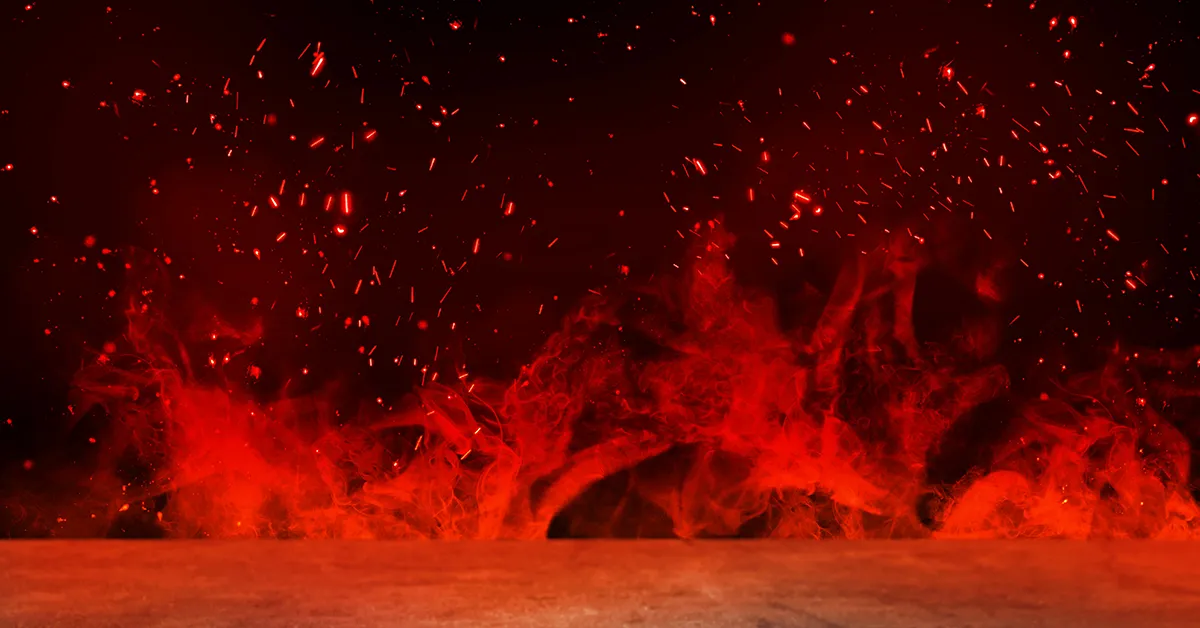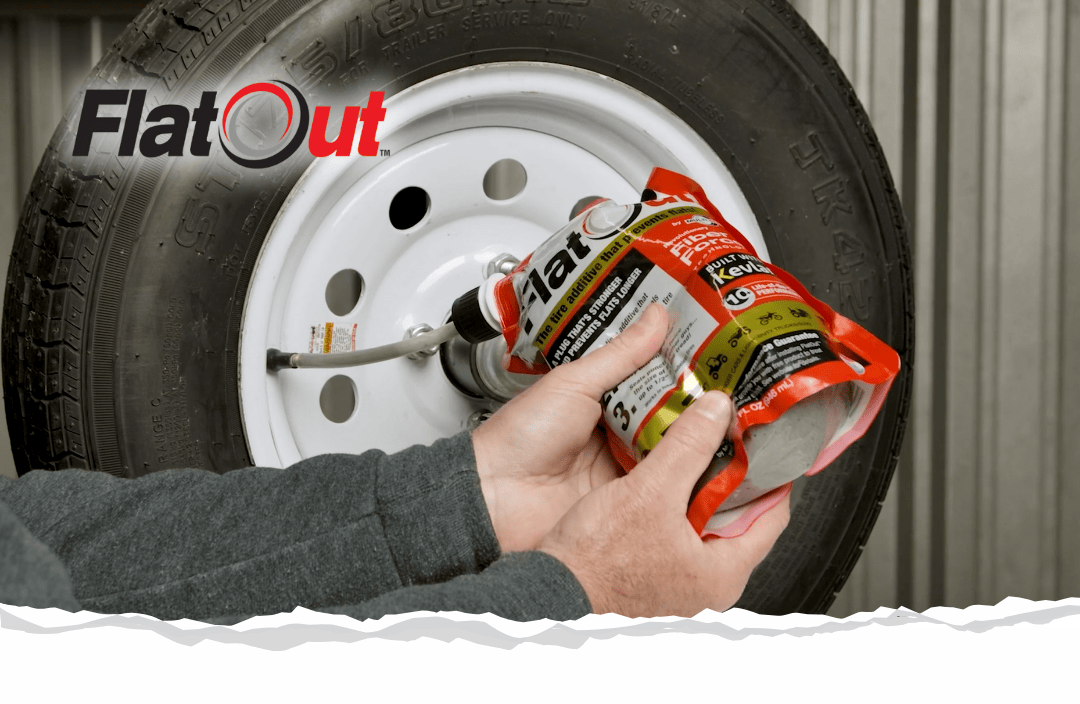
How Tire Sealant Works
If you’re on a weekend trip, a flat tire can delay your plans and put a damper on the whole

The following paragraphs will address the question, “Do tire sealants cause chamber fires?” The belief that the answer to this question is “yes” has a significant following in the retreading industry. We will see that the science of combustion does not support this position regarding high-performance tire sealants (HPTS). Some individuals, even in light of the inviolable science which will be presented, maintain the position of “yeah, but I still think that they are involved!”
There is no magic involved with combustion, and ALL combustion is subject to the chemical properties and principles of the components involved.
The majority of HPTS in use today are formulated with a liquid base of approximately half water and half either ethylene glycol (EG) or propylene glycol (PG). This liquid base is essentially the same as common antifreeze. This mixture is thickened with a very small amount of biosynthesized polymer gum. Suspended in the thickened liquid are synthetic fibers which are common of the aramid family. A well-known example of this type of fiber is DuPont Kevlar, but many other aramids exist in the market. Many HPTS also contain rubber particles, inorganic, particulate fillers and inorganic corrosion inhibitor salts. The combustion characteristics of all components will be addressed.
It will be assumed that casings are not properly cleaned prior to the retreading process, although it would be impossible to properly inspect and repair casings with large amounts of residual sealant in them. Glycol is the component present in the largest quantity and is the most likely suspect. The most common combustion property quoted in a material safety data sheet (MSDS) is the flashpoint. The flashpoint is NOT the temperature at which a material bursts into flame! The flashpoint is the lowest temperature that material must attain for its vapors to ignite in very close proximity to an open flame. The important issue with flashpoint is that there must be an open flame ignition source. There are numerous flash point determination procedures with the “closed cup” techniques such as the Pensky Martin Closed Cup (PMCC) giving the lowest, thus most conservative values. The PMCC values for EG and PG are 240.8°F. and 228.2°F., respectively. This means that for either of the glycols to burn at the temperatures encountered in curing chambers, there would have to be an ignition source within millimeters of the glycol. It must be noted that these flashpoints are the values for pure glycol. The flashpoint of a 50% water solution of glycol is quoted as, “none due to boiling”.
The less quoted, but more relevant property of glycols is the auto-ignition temperature or kindling point. This is the minimum temperature that material must attain for combustion to occur. Nothing burns at temperatures below its auto-ignition temperature! Auto-ignition temperatures for EG and PG are 748.4°F. and 699.8°F., respectively. The conclusion is made from the above information that a glycol/water mixture will not burn even if contacted by flame. If all water is evaporated, the remaining glycol will not burn even in contact with flame under its flashpoint. An ignition source must be present for any combustion to occur. The ignition source must be at least equal to the auto-ignition temperature. From a practical standpoint, there must be an active fire underway in the chamber to ignite glycol.
The preceding discussion eliminates glycol in the casings as a possible cause of chamber fires, but what if glycol vapors are drawn into the electric heater of the chamber, which could act as an ignition source? Combustible vapors in air can only be ignited if their concentration is between the lower explosive limit (LEL) and the upper explosive limit (UEL). The explosive concentration of PG in air is 2.5% to 12.5% volume. The explosive concentration for EG is 3.2% to 15.3% vol. Any concentration outside of these limits will not burn under any condition. The air in a curing chamber is rapidly circulating and mixing. Therefore, for any of the air to reach an explosive (combustible) concentration of glycol, all of the air would have to be at the same concentration. If PG is the glycol present (lowest LEL), the entire chamber would need to have at least 2.5% volume PG vapors to ignite in the electric overhead heater. Assuming that the chamber is approximately 6 ft. diameter and 20 ft. long, its volume is 770 cu. ft. The ideal gas laws determine that it would take 5.6 lbs. of PG vapor to yield a 2.5% vol. concentration in the chamber. This equates to about 5 quarts of HPTS! Remember that this concentration is required for combustion under any circumstance. For every atmosphere of pressure in the chamber, the amount of PG vapor increases proportionally—in other words at 80 psig, the amount of HPTS required to achieve LEL would be over 6 gallons. This assumes that there is total evaporation of the sealant at temperatures several hundred degrees lower than the boiling point of PG at 80 psig. If all of these conditions were met and PG in the chamber environment ignited, it would create a “bomb of great proportion”—not a localized fire in one or two casings.
Now, on to the solid components. The fillers and corrosion inhibitor salts can be eliminated because they are non-flammable. This leaves the thickener, the rubber particles, and the fibers. The thickener is in the HPTS at less than 0.5% wt. It is a non-volatile high molecular weight polymer with essentially no vapor pressure, which coupled with its extremely low concentration, makes its participation in combustion unlikely, if not impossible. The rubber particles are ground tread rubber which is sorted by particle size. These particles have the same composition as the tires in the curing chamber and therefore, the same tendency to “start fires”. The fibers are the only remaining component. They represent less than 10% wt. in the HPTS formulation. Flame tests have been conducted on dried fiber residue collected from improperly cleaned casings. It was observed that the fiber residue would not sustain a flame. This would eliminate the possibility that solid residue is drawn into the overhead heater and be expelled as a flaming object, which could ignite materials in the chamber. The only component in the residue that could burn under propane torch conditions was the particulate rubber, which produced a minuscule flame lasting 2 to 3 seconds –insufficient time for contact with materials in the chamber.
The questions of whole sealant residue in casings, flammable glycol vapor concentration in the chamber, and fire transfer via burning dry HPTS residue emanating from the overhead heater have been addressed on a scientific level. Based on well known and understood flammability characteristics of HPTS components and empirical data (in light of the conditions encountered in a curing chamber), the participation of HPTS in chamber fires is extremely unlikely, if not impossible. The HPTS industry wants to find the answer as much if not more than the retreading industry!

If you’re on a weekend trip, a flat tire can delay your plans and put a damper on the whole

Even a small puncture can ruin your weekend. FlatOut not only seals punctures, it also prevents slow leaks around the